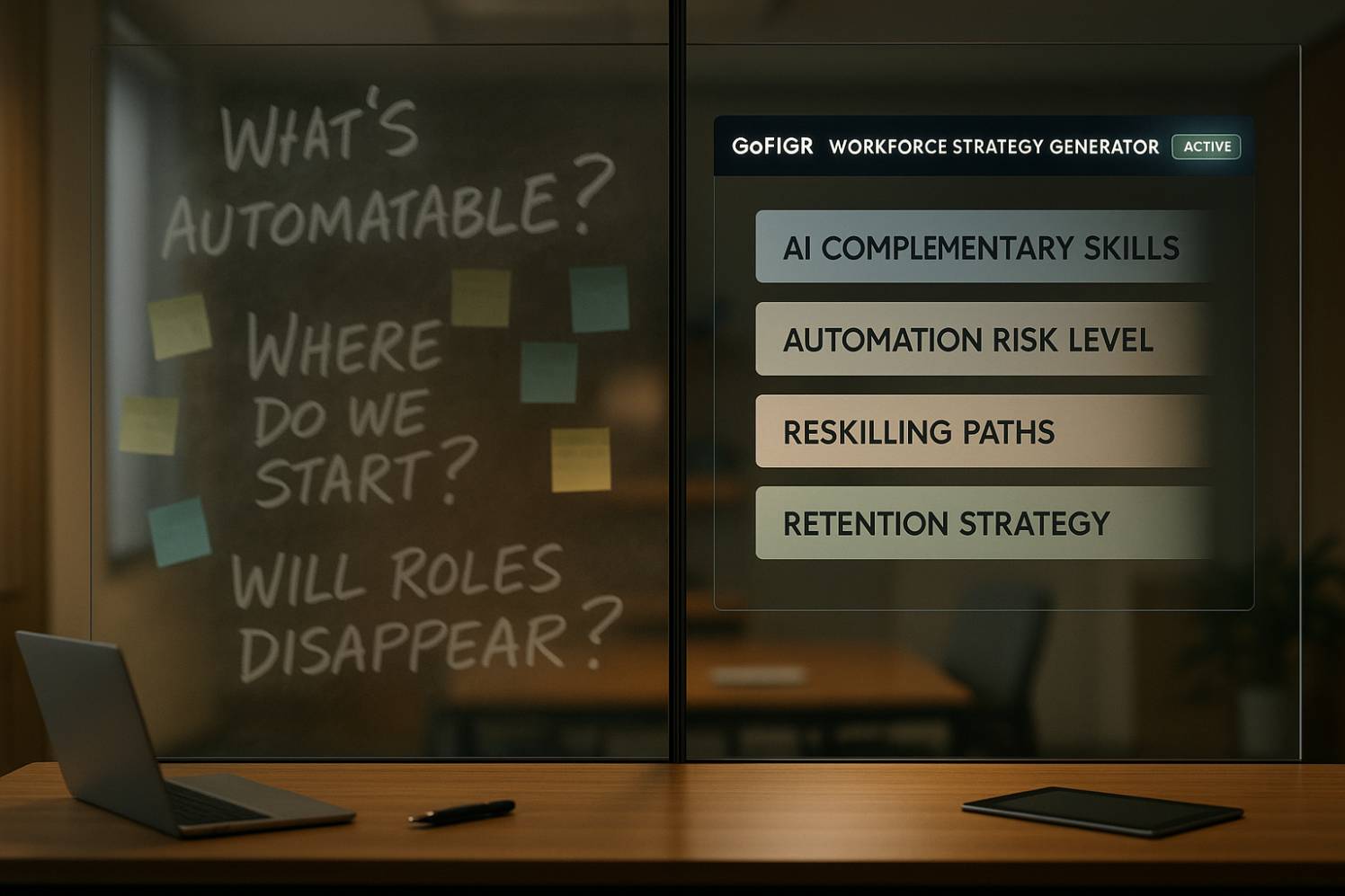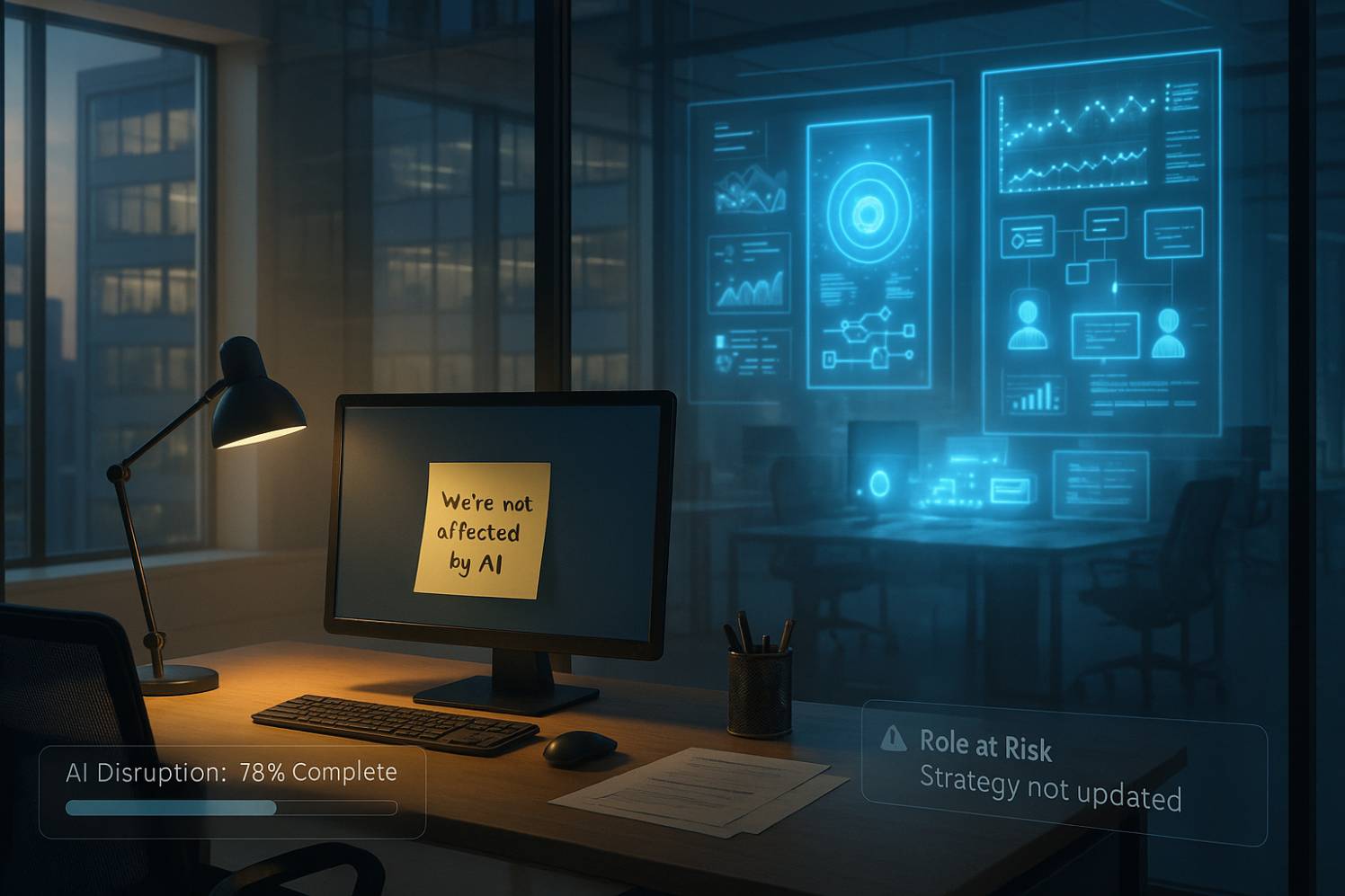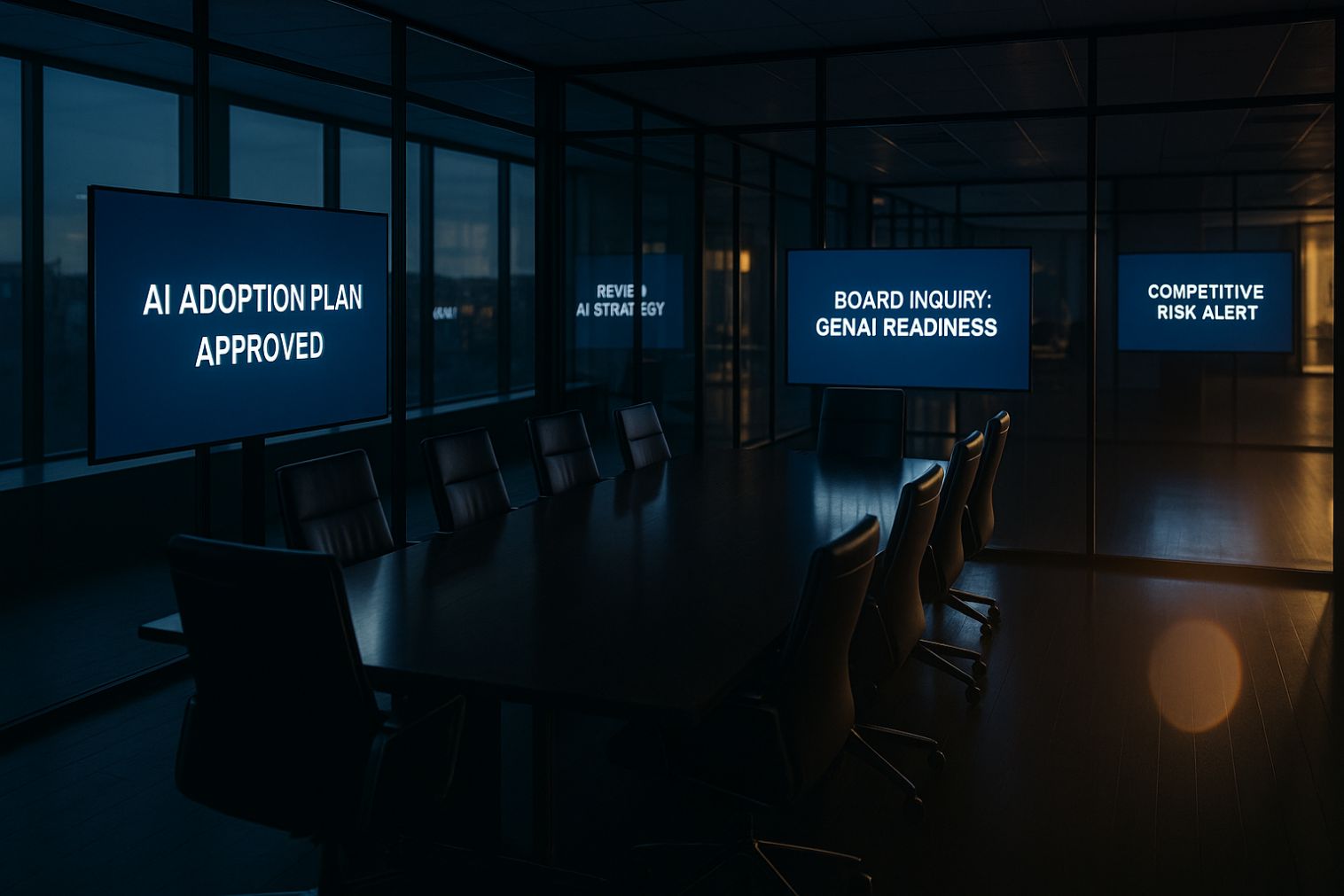When one CEO makes a bold AI move, the whole market watches – and reacts.
Whether it's a headline-grabbing investment in artificial intelligence or a round of layoffs linked to automation, big decisions from high-profile leaders rarely stay contained to their own organisations.
They set benchmarks for what's possible – influencing how competitors, boards investors and even regulators see the future of work.
AI adoption by a single market leader can trigger a ripple effect. Some CEOs feel the pressure to follow suit to avoid falling behind. Others take a "wait and see" approach, watching closely to gauge the market's response.
Investors, meanwhile, can either reward strategic plays or punish moves that appear poorly timed or poorly communicated.
The question is, when it's your turn to act on AI, will your decision inspire confidence… or spark doubt?
This article looks at how AI workforce planning decisions play out on the big stage, why execution and narrative matter just as much as the decision itself and what leaders can do to steer the ripple instead of getting caught in it.
So without any further ado, let's start!
The Shift in CEO Mindset Around AI Implementation
When a major CEO makes a bold AI move, other leaders take notice, thinking in terms of precedent, risk and shareholder reaction.
A big, well-executed AI investment can trigger a positive ripple. Think of Amazon's push into AI-powered logistics automation or Commonwealth Bank of Australia's rollout of AI-driven customer service.
- Both moves were positioned as long-term growth strategies, signalling innovation and operational leadership.
- Investor confidence rose, and competitors began exploring similar initiatives.
But there's also the negative ripple:
- When AI adoption is linked to sudden layoffs or poorly framed cost-cutting, the backlash can be swift – from the market, the media and employees alike.
- Trust wears down and the focus shifts from innovation to questions about leadership judgement.
These decisions are read as signals.
If a market leader cuts costs citing AI, competitors may feel pressured to follow – ready or not. If bold AI investmentwins investor approval, others often accelerate their own plans.
And it's not just within the same sector; a tech CEO's high-profile AI move can influence leaders in manufacturing, finance and retail, because the real signal is about pace, positioning and perceived readiness for the future.
In other words: one move can set a precedent, shape market expectations and alter the AI adoption timeline for an entire industry – or even multiple industries.
A Real-Life Example: Why Timing and Communication Matter in AI Decisions
On 31 July 2025, Atlassian's share price fell 2.74% despite a sharp rise in trading volume, after announcing 150 job cuts via a pre-recorded video. The move drew criticism for being impersonal, and the backlash grew when paired with news of a costly Formula One sponsorship.
For many, the optics didn't add up – cost-cutting on one side, high-profile spending on the other.
This created a perception gap that raised concerns about:
- Corporate culture
- Leadership communication
- Strategic priorities
The Takeaway for Other Leaders
Big AI-related moves, especially those involving workforce changes, are never viewed in isolation.
Without a clear, credible story that connects cost-cutting, AI adoption and investment priorities, you risk ending up on the front page for the wrong reasons – facing damage to investor confidence, employee trust and brand reputation.
Navigating the Pressure to Respond to AI Business Decisions
Once a high-profile AI move hits the headlines, whether it's a strategic investment or cost-cutting via automation – the pressure builds quickly.
Boards take notice. Employees ask questions. Stakeholders expect clarity.
For CEOs and boards, that ripple creates two strategic risks:
- Acting too soon, chasing momentum without the right foundations
- Acting too late, missing the opportunity to lead with clarity and control
These Are Avoidable with the Right Preparation
- Investor trust holds steady when there's a clear, well-timed strategy
- Employee morale stays strong when the 'why' and 'how' of AI are communicated early
- Brand reputation is protected when AI is framed as a lever for long-term value, not short-term cuts
The takeaway?
Every AI decision is both a business move and a clear message to the world – and how that message lands can determine whether you gain momentum or face backlash.

Turn AI Uncertainty Into a Clear Workforce Strategy
To lead confidently in a shifting market, CEOs need more than intuition – they need foresight and facts. That means understanding where AI will actually land, how it will reshape their workforce and how to communicate that shift with credibility.
This is where many leadership teams stumble: they sense disruption but don't have a grounded view of the risk or a compelling story to tell.
Here's What Leaders Need Visibility Into
- Where AI will land first: Which functions or workflows are most exposed to automation
- Which roles will be impacted: From augmentation to full displacement, who will be affected and when
- Opportunities to reskill or redeploy talent: Where human value can be redirected, not just reduced
And it can't stop at HR or operations.
The communications strategy must reinforce transformation over fear – highlighting innovation, capability-buildinga nd future readiness, not just savings or headcount shifts.
When the AI Question Comes Knocking – Will You Be Ready?
At some point, whether it's your board, your executive team or your regulator – someone's going to ask:
"What are we doing about AI?"
If you don't have an answer, you'll be scrambling. Not because the future is uncertain, but because you didn't prepare for its possibility.
That's why the GoFIGR Impact of AI Diagnostic exists.
It's not about hype. It's about helping leaders build clarity, direction and confidence before change hits.
This Diagnostic Gives You the Power To
- Map automation risk across departments and job families
- Identify future skill gaps linked to your unique AI trajectory
- Build a defensible position grounded in data – not gut feel
For example, one insurance client used the diagnostic to run multiple AI scenario planning exercises. It helped them uncover the true timeline of impact, surface early reskill opportunities and shape a clear narrative that reassured both investors and internal teams.
They didn't bank on one future. They planned for multiple – and backed each one with data, not guesswork.
That's the difference. It's the shift from being blindsided to being prepared. From passive reaction to proactive strategy.
Because AI is already changing the shape, size and nature of jobs. Pretending it won't touch you is the real risk.
Start With Strategic AI Planning
Even if you're just starting, the diagnostic gives you a clear starting point – no guesswork, no waiting for disruption to arrive. Just a structured way to explore your future scenarios and decide how to respond before you're forced to.
So if you're thinking, "We don't have anything yet," – that's exactly the time to act.
- Start with the diagnostic
- See what's coming
- Lead like you saw it first
You don't need a fully formed AI strategy to start thinking clearly. All you need is a way to see what's coming – and how your organisation can respond.
Let's turn uncertainty into insight, and guesswork into grounded, confident planning.

Control Your AI Business Story Before the Market Writes It for You
The market will react to your AI decisions – the only question is how.
Whether you're making your first AI move or refining your roadmap, how you frame the change matters. Internally, your people need clarity and confidence. Externally, your market expects direction – not hesitation.
GoFIGR helps CEOs and executive teams:
- Get clarity on where AI is hitting your business
- Understand the real impact on roles and people
- Build a story that's strategic, not reactive
Don't wait for pressure to build or disruption to land. Now is the moment to lead with intent.
Contact GoFIGR today to turn AI business transformation into a confident, people-first strategy.



